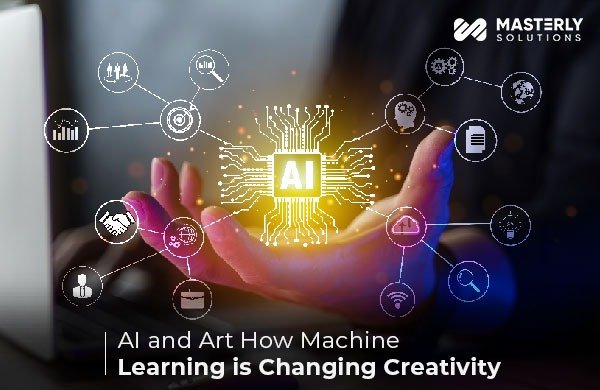
In the ever-evolving landscape of art and technology, machine learning (ML) emerges as a pivotal force, reshaping our understanding of creativity. The journey from paintbrushes to pixels has been long, yet the advent of ML in art marks a significant leap. This blog explores the intriguing intersection of AI and art, delving into how ML technologies are revolutionizing the creative process and opening new realms of possibilities.
The Basics of Machine Learning in Art
Machine Learning, a subset of artificial intelligence (AI), involves algorithms that enable computers to learn from and make decisions based on data. In the realm of art, ML algorithms like neural networks and generative adversarial networks (GANs) have become increasingly popular. These tools allow artists and machines to collaborate, creating intricate patterns and visuals that might be impossible for a human alone. Examples include AI programs that can mimic the styles of famous painters or generate entirely novel artworks.
Transformative Impact on Artistic Creation
The impact of ML in art is profound and multifaceted. AI-generated art, such as the works produced by GANs, challenges our perception of creativity. Style transfer algorithms, for instance, can merge the aesthetics of different artists, leading to unique and unexpected creations. This synergy between human and machine is not about replacing the artist but rather augmenting and expanding their creative capabilities.
Ethical Considerations and Authorship
With AI’s growing role in art, questions of authorship and ethics surface. Who is the true creator of an AI-generated piece – the algorithm, the programmer, or the machine itself? This debate extends to copyright and originality, challenging traditional notions of artistic ownership. The future of intellectual property rights in AI art remains a complex and evolving issue.
Machine Learning in Artistic Education and Industry
Machine learning is also transforming art education and the industry. Educational institutions are beginning to incorporate AI tools into their curriculum, offering a new dimension to artistic training. In the industry, ML is influencing everything from design to market dynamics. AI art pieces are fetching significant sums at auctions, signifying a shift in how art is valued and traded.
Future Trends and Predictions
Looking ahead, emerging technologies like augmented and virtual reality are poised to further intertwine with ML in art. This fusion is expected to lead to groundbreaking forms of expression and experience. The potential for AI to create new art forms and collaborate with artists is limitless, heralding an exciting era for creative exploration.
Challenges and Limitations
Despite its potential, ML in art faces technical challenges and limitations. AI systems often require large datasets and significant computing power. Moreover, while ML can replicate styles and patterns, understanding the nuanced emotions and experiences that often inspire human art remains a challenge. Ensuring accessibility and addressing the digital divide in accessing these technologies is also crucial.
Conclusion
Machine learning is undeniably transforming the art world, blurring the lines between technology and creativity. As we navigate this new era, the synergy between human artists and AI opens up unprecedented avenues for creative expression. While challenges remain, the future of AI and art is bright, promising a canvas where technology enhances, rather than replaces, the human touch in creativity.
